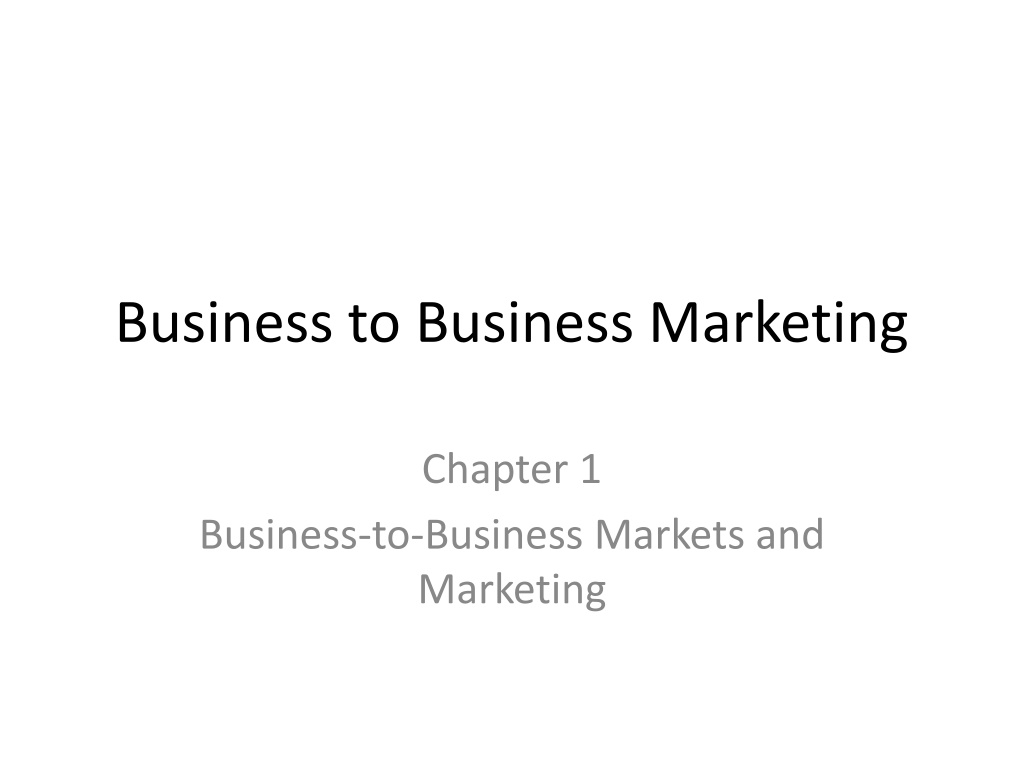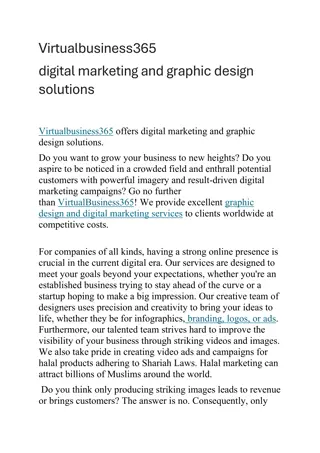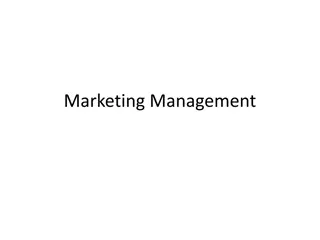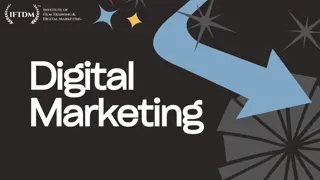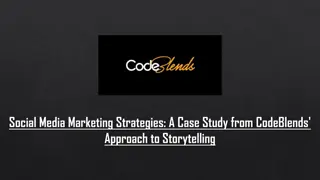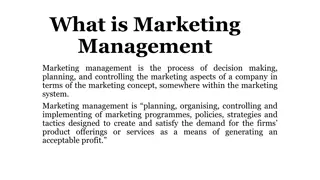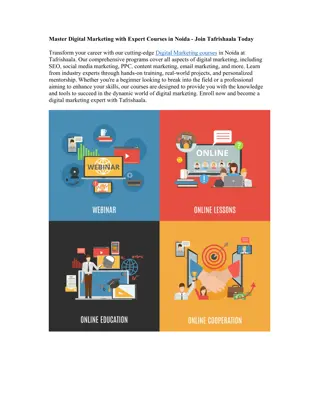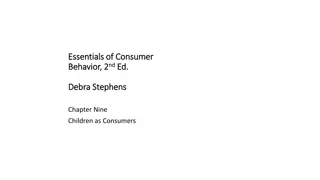Understanding Business-to-Business Marketing
Business-to-business marketing involves marketing goods and services to organizations, focusing on the nature of the customer rather than the product. This chapter covers defining characteristics of B2B markets, differentiation from consumer markets, the impact on marketing management, and industry dynamics like derived demand and concentration ratios.
Download Presentation

Please find below an Image/Link to download the presentation.
The content on the website is provided AS IS for your information and personal use only. It may not be sold, licensed, or shared on other websites without obtaining consent from the author. Download presentation by click this link. If you encounter any issues during the download, it is possible that the publisher has removed the file from their server.
E N D
Presentation Transcript
Business to Business Marketing Chapter 1 Business-to-Business Markets and Marketing
Learning outcomes Know what are the defining characteristics of business to business markets Be able to differentiate between business to business markets and consumer markets Understand how the characteristics of business to business markets affect the practice of marketing management Appreciate the changing balance between the agricultural, manufacturing and service sectors in the world s major economies.
Learning outcomes Understand the nature and significance of derived demand in business to business markets Be able to explain the significance of an industry concentration ratio Understand the nature and the significance of the accelerator effect in business to business markets Be able to apply two complementary classification schemes to the categorization of business products
Business marketing Business marketing is concerned with the marketing of goods and services to organizations. The key distinguishing feature of business marketing is the nature of the customer, rather than the nature of the product. Although there are products that are bought only by organizations and not by final consumers, there are many products that are bought by both organizations and consumers.
MARKET STRUCTURE DIFFERENCES Dimension Nature of demand Demand volatility Demand elasticity Reverse elasticity Nature of customers Market fragmentation Market complexity Market size Number of buyers per seller Number of buyers per segment Relative size of buyer/seller Geographic concentration Business marketing Derived Greater volatility Less elastic More common Greater heterogeneity Greater fragmentation More complex Larger overall value Few Few Often similar Often clustered Consumer marketing Direct Less volatility More elastic Less common Greater homogeneity Less fragmentation Less complex Smaller overall value Many Many Seller much larger Usually dispersed
Industry Concentration Ratios percentages Market shares: Global pharmaceuticals, 2014
Industry concentration ratios percentages Market shares: Global truck manufacturing, 2013
BUYING BEHAVIOUR DIFFERENCES Dimension Buying influences Purchase cycles Transaction value Buying process complexity Buyer/seller interdependence Purchase professionalism Importance of relationships Degree of interactivity Formal, written rules Business marketing Many Often long Often high Often complex Often high Often high Often important Often high Common Consumer marketing Few Usually short Usually small Usually simple Usually low Usually low Usually unimportant Usually low Uncommon
MARKETING PRACTICE DIFFERENCES Dimension Selling process Personal selling Use of relationships Promotional strategies Web integration Branding Market research Segmentation Competitor awareness Product complexity Business marketing Systems selling Used extensively Used extensively Limited, customer-specific Greater Limited Limited Unsophisticated Lower Greater Consumer marketing Product selling Limited Limited Mass market Limited Extensive, sophisticated Extensive Sophisticated Higher Lesser
Business market classification A common classification for business products is installations, accessory equipment, MRO* supplies, raw materials, manufactured materials & parts, business services. A key distinction is made between products that are incorporated into the final product (entering goods), and those that are not. * MRO = Maintenance, Repair & Operations (supplies)
Business market classification Original equipment manufacturers combine components bought from other suppliers into a finished product that is sold to end-users. The after-market comprises sales of parts for repair and upgrade to products that are already owned by an end-user
